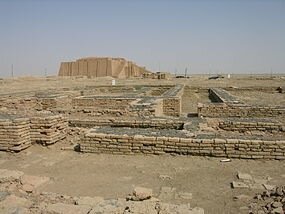Seniors Travel to Exotic UR (Part 2)
Senior friends, grab a cup of coffee and enjoy an excursion to Iraq with me, by our computers. There’s this big excavation going on there that I mentioned a couple of days ago and I want to finish that journey. It will be done in the comfort of our own homes because tourism visas are not being granted for Iraq right now.
Archaeologists found a big surprise in the area of the biblical Abraham’shome. The complex just unearthed on a dig is said to be about the size of a football field. Senior citizens, perhaps you saw the details shared by Fox News on April 4. It is believed to be Abraham’s Lost City approximately 4,000 years old.
Ur was an ancient Sumerian city that is thought to have been settled in the late sixth millennium, during the Ubaid Period. By about 3000 B.C., the area of Ur was about 37 acres. During the Early Dynastic Period [see Ur kings timeline], Ur reached its maximum area of 124 acres and was one of the richest of the southern cities thanks to trade, facilitated by its harbor on the Persian Gulf.
Perhaps no excavation in the more than 150 years of archaeological work in Mesopotamia has excited as much public attention as C. Leonard Woolley’s work at ancient Ur in the 1920s and early 1930s. Ur was fabled as the city of the Sumerian moon god Nanna and the traditional home of the biblical patriarch Abraham (Gen. 12:4-5).
In the thirteen years of excavations, newspapers around the world printed countless articles. The Illustrated London News, reported the results of Woolley’s discoveries at Ur in some thirty features, at least two with color illustrations. The Royal Cemetery at Ur yielded many valuable artifacts.
Ur Attracts Senior Historians
Ancient history alright and full of history, Ur was a major city, and later the capital, of the Sumerian Empire in southern Mesopotamia. Its location near the sea made it a center of commerce and trade routes. Between 2030-1980 BC Ur was the world’s largest city, boasting about 65,000 inhabitants within its walls.
The city featured many glorious temples and tombs. Today, the site is recognizable for its well-preserved remains of the Great Ziggurat. Its ruins are approximately midway between the modern city of Baghdad, Iraq, and the head of the Persian Gulf, south of the Euphrates River, on the edge of the Al ajarah Desert.
The site of Ur is known today as Tall al Muqayyar, Iraq. In antiquity the Euphrates River flowed near the city walls. We can’t go to Iraq but we can enjoy the discovery… jeb



Good info. Lucky me I ran across your blog by accident (stumbleupon).
I’ve saved as a favorite for later!